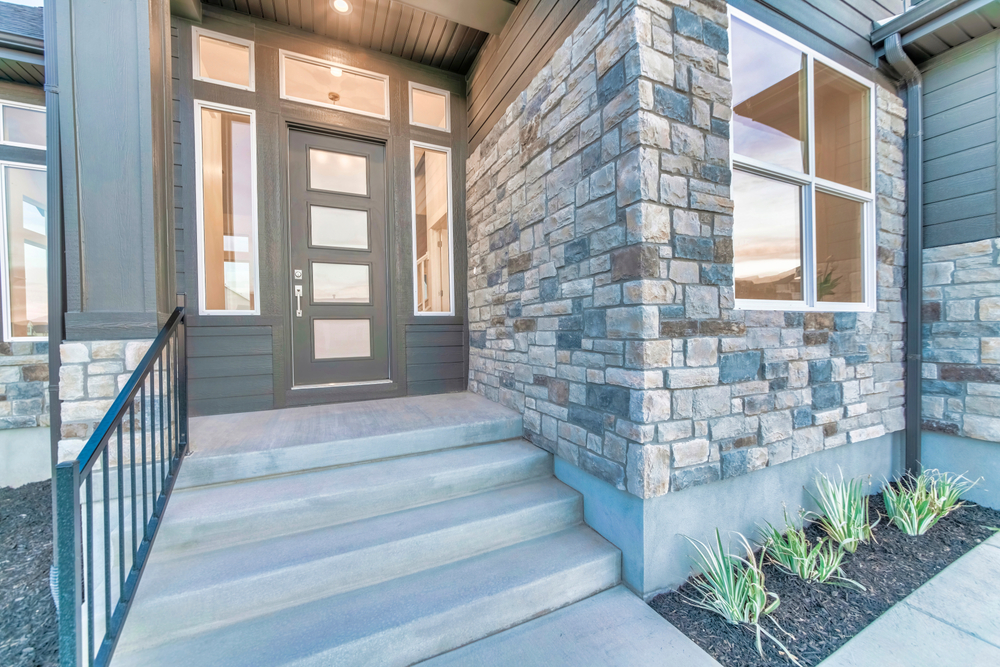Call Us
1-866-968-0479Key Takeaways:
Siding is crucial to a home’s exterior, as it protects the house from the elements and provides insulation from heat and cold. In addition to its utilitarian function, siding adds visual interest to a home’s exterior. A few types of siding materials are available to homeowners today, including vinyl, aluminum, wood, cement fiber, and steel.
This blog post by Absolute Roofing and Construction, Inc will examine some of the most common siding materials and discuss their advantages and disadvantages.
Vinyl is one of the most affordable solutions for home siding since it is made of polyvinyl chloride (PVC). Vinyl siding has advanced significantly in recent years while staying quite affordable. With this adaptable siding, homeowners can obtain a broad range of styles and looks. It is also incredibly resistant to the elements and requires minimal upkeep. Vinyl siding is simple to install and may be done as a do-it-yourself project if you have the necessary materials.
However, vinyl siding can be damaged by severe weather. If this occurs, expert repair may be required. Another difficulty is that vinyl, unlike cedar or wood, does not decay but can melt. After some time, it may crack, fade, and appear old and worn. Vinyl is also a challenging siding material owing to environmental issues during production.
Natural wood is unrivaled as a classic siding material. It has a lovely appearance, is entirely natural, and frequently gets more pleasing with age. Wood siding is popular among homeowners for these reasons. It is widely used in the exteriors of bungalows and cottages. However, to reap these benefits, you must first select the appropriate wood. There are many types of wood to pick from; however, some may be inappropriate for your environment.
Clapboard shakes and shingles are all types of wood siding. The clapboard comprises horizontally mounted wood planks, with the upper piece overlapping the bottom. Woods like redwood and western red cedar are noted for their durability and beauty, making them the best alternatives for anybody searching for wood siding.
Shingles are consistent in appearance but thinner than shakes. As a result, shingles provide a smooth and constant look. You may also cut them into various shapes to improve the appearance of your home’s façade.
Natural wood siding has extensive care requirements despite these benefits, often involving regular cleaning, staining, and sealing. As a result, if you adore the stunning appearance of wood siding, you must do routine upkeep. Another disadvantage of wood is that it is vulnerable to rodent and insect infestations.
Finally, wood is not fireproof. This might be a significant deciding factor if you reside in a dry environment where forest fires are prevalent.

Brick is another classic choice for siding since it looks great and lasts a long time. It is made of clay, and the market includes authentic bricks in various textures and sizes.
Though brick isn’t as standard in new construction as it once was, it’s still a viable alternative, particularly for those building new houses. It gives any structure a unique blend of rustic charm and pleasant beauty. Brick siding is popular because it requires less upkeep.
While brick construction offers numerous practical advantages, the appearance is not for everyone. Water can also enter the bricks, particularly if no membrane is built between the brick and the home. Brick installation is a time-consuming and labor-intensive job. This implies that installing brick siding will cost more than installing other types.
Aluminum siding offers several advantages, making it a popular material for home remodeling. This siding is available in a variety of colors and styles. It is also reasonably long-lasting compared to other siding materials on the market and requires minimal maintenance. Since it has the same insulating features, aluminum is an excellent alternative for other siding materials, such as vinyl. Furthermore, unlike vinyl, it does not fracture or damage.
Regardless, aluminum is painted, and if the coating is scraped, it will reveal a sensitive spot on your property. Aluminum siding is also prone to dents and damage from severe weather conditions such as hail. Even something as simple as a thrown baseball might cause siding damage. Installing aluminum siding in congested locations or areas with bad weather conditions may not be a sensible option.
This is another modern synthetic siding alternative, commonly made of cement, sand, and wood fibers. Adding wood fibers to the mix increases its strength, and there is a unique method for “curing” fiber cement and removing all moisture. The result is incredibly durable, sturdy, and aesthetically beautiful. Fiber cement siding is also non-combustible, termite resistant, and comes in various textures, colors, and designs. Because of the vast diversity of fiber cement, homeowners use it to imitate natural stone, brick-and-mortar, or even wood.
One disadvantage of fiber cement is that it must be painted and caulked regularly to keep its look. Furthermore, due to its weight, installation may be more complex and require additional training.
Since each of the siding materials described has advantages and disadvantages, you must choose carefully. This is because while aesthetics are essential, durability should take priority. You want a visually appealing, adaptable, weather-resistant material and simple to install.
If you are still deciding on the appropriate material for your siding, contact Absolute Roofing and Construction, Inc. For over 30 years, we have been installing Hardie siding on various homes in Brecksville. We employ high-quality materials and cutting-edge equipment to ensure that your siding is built correctly and looks excellent.